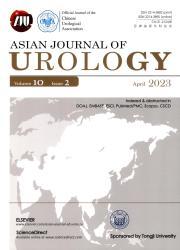Optimized graph neural network-multilayer perceptron fusion classifier for metastatic prostate cancer detection in Western and Asian populations
IF 2.4
3区 医学
Q2 UROLOGY & NEPHROLOGY
引用次数: 0
Abstract
Objective
Prostate cancer (PCa) exhibits significant genomic differences between Western and Asian populations. This study aimed to design a predictive model applicable across diverse populations while selecting a limited set of genes suitable for clinical implementation.
Methods
We utilized an integrated dataset of 1360 whole-exome and whole-genome sequences from Chinese and Western PCa cohorts to develop and evaluate the model. External validation was conducted using an independent cohort of patients. A graph neural network architecture, termed the pathway-aware multi-layered hierarchical network-Western and Asian (P-NETwa), was developed and trained on combined genomic profiles from Chinese and Western cohorts. The model employed a multilayer perceptron (MLP) to identify key signature genes from multi-omics data, enabling precise prediction of PCa metastasis.
Results
The model achieved an accuracy of 0.87 and an F1-score of 0.85 on Western population datasets. The application of integrated Chinese and Western population data improved the accuracy to 0.88, achieving an F1-score of 0.75. The analysis identified 18 signature genes implicated in PCa progression, including established markers (AR and TP53) and novel candidates (MUC16, MUC4, and ASB12). For clinical adoption, the model was optimized for commercially available gene panels while maintaining high classification accuracy. Additionally, a user-friendly web interface was developed to facilitate real-time prediction of primary versus metastatic status using the pre-trained P-NETwa-MLP model.
Conclusion
The P-NETwa-MLP model integrates a query system that allows for efficient retrieval of prediction outcomes and associated genomic signatures via sample ID, enhancing its potential for seamless integration into clinical workflows.
西方和亚洲人群转移性前列腺癌检测的优化图神经网络多层感知器融合分类器
目的前列腺癌(PCa)在西方和亚洲人群中表现出显著的基因组差异。本研究旨在设计一种适用于不同人群的预测模型,同时选择一组有限的适合临床实施的基因。方法利用来自中国和西方PCa队列的1360个全外显子组和全基因组序列的集成数据集来开发和评估该模型。外部验证采用独立的患者队列进行。一个被称为路径感知多层分层网络-西方和亚洲(P-NETwa)的图神经网络架构,被开发和训练来自中国和西方队列的组合基因组图谱。该模型采用多层感知器(MLP)从多组学数据中识别关键特征基因,从而能够精确预测前列腺癌转移。结果该模型在西方人口数据集上的准确率为0.87,f1得分为0.85。中西人口综合数据的应用将准确率提高到0.88,f1得分为0.75。该分析确定了18个与PCa进展相关的特征基因,包括已建立的标记(AR和TP53)和新的候选基因(MUC16、MUC4和ASB12)。对于临床应用,该模型针对市售基因面板进行了优化,同时保持了较高的分类准确性。此外,还开发了一个用户友好的web界面,以便使用预训练的P-NETwa-MLP模型实时预测原发性和转移性状态。P-NETwa-MLP模型集成了一个查询系统,该系统允许通过样本ID有效检索预测结果和相关基因组特征,增强了其与临床工作流程无缝集成的潜力。
本文章由计算机程序翻译,如有差异,请以英文原文为准。
求助全文
约1分钟内获得全文
求助全文
来源期刊

Asian Journal of Urology
UROLOGY & NEPHROLOGY-
CiteScore
4.00
自引率
3.80%
发文量
100
审稿时长
4 weeks
期刊介绍:
Asian Journal of Urology (AJUR), launched in October 2014, is an international peer-reviewed Open Access journal jointly founded by Shanghai Association for Science and Technology (SAST) and Second Military Medical University (SMMU). AJUR aims to build a communication platform for international researchers to effectively share scholarly achievements. It focuses on all specialties of urology both scientifically and clinically, with article types widely covering editorials, opinions, perspectives, reviews and mini-reviews, original articles, cases reports, rapid communications, and letters, etc. Fields of particular interest to the journal including, but not limited to: • Surgical oncology • Endourology • Calculi • Female urology • Erectile dysfunction • Infertility • Pediatric urology • Renal transplantation • Reconstructive surgery • Radiology • Pathology • Neurourology.
 求助内容:
求助内容: 应助结果提醒方式:
应助结果提醒方式:


